(Posted on July 18, 2013)
Let me tell you something that I’ve never told anyone before.
From 2003 up until a couple of months ago, I had been donning a fringe. Throughout the entire 10 years, I had never grown my fringe beyond eye level. Whenever it grew that long, I would have it trimmed.
My Pictures (2005 Through 2012)
Case in point: My pictures from years 2005 through 2012, below:
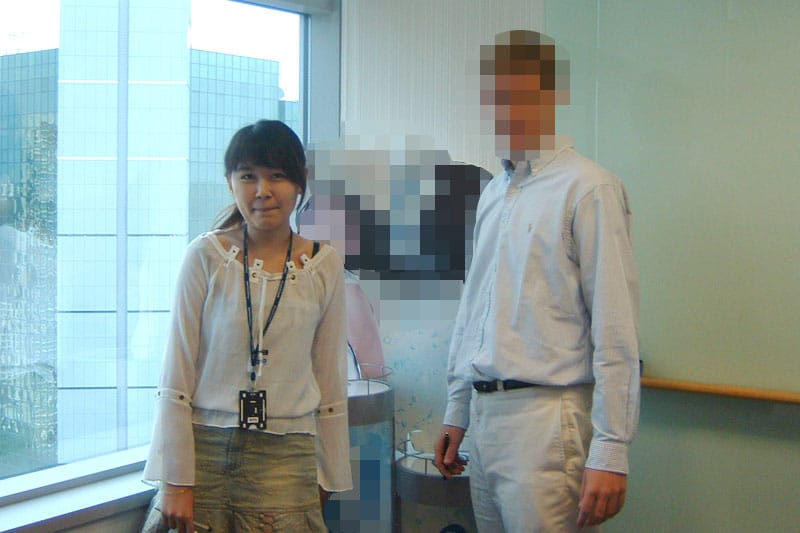
2005: While I was interning in my previous company (P&G)
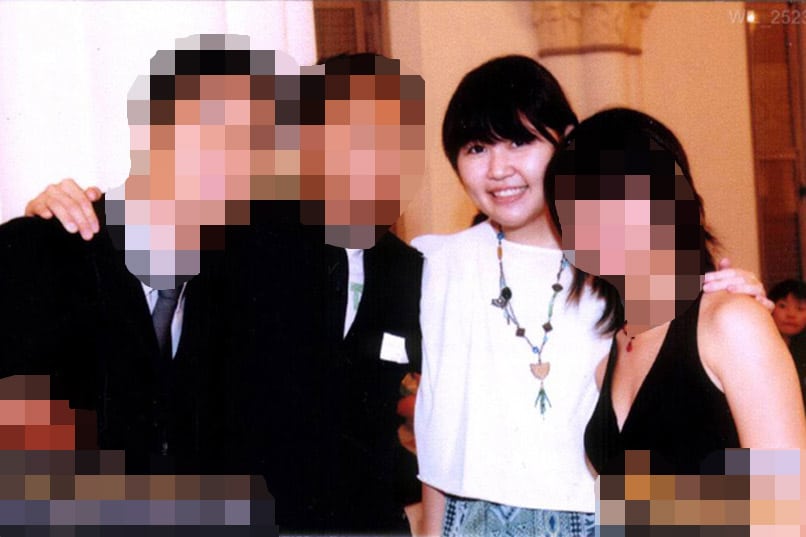
2006: At my commencement (graduation) dinner (I graduated from NUS)
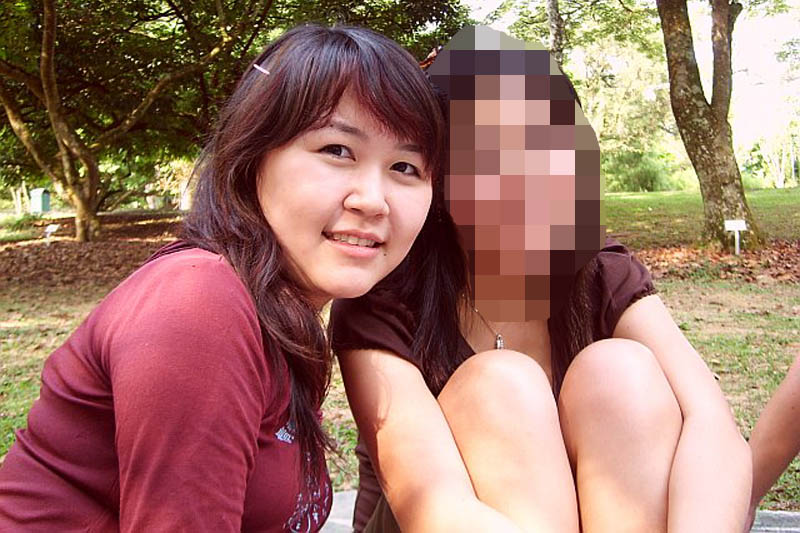
2007: With my high school friends at Botanic Gardens
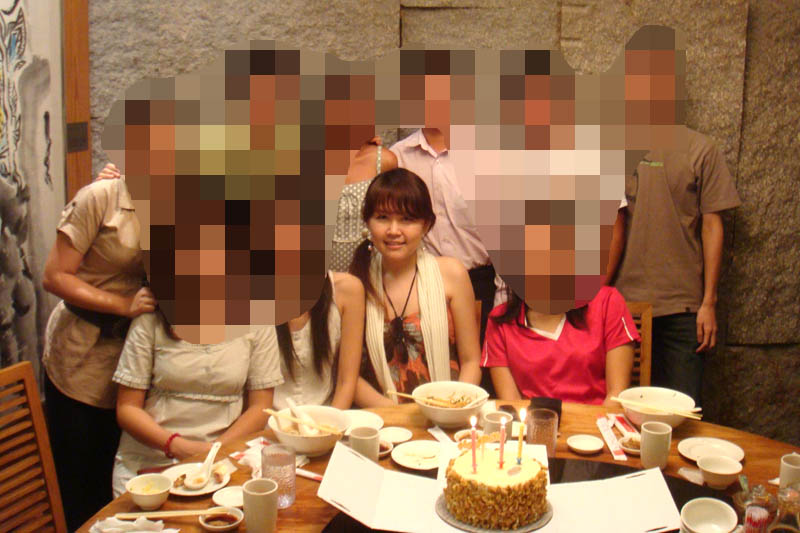
2008: At my (24th) birthday celebration.
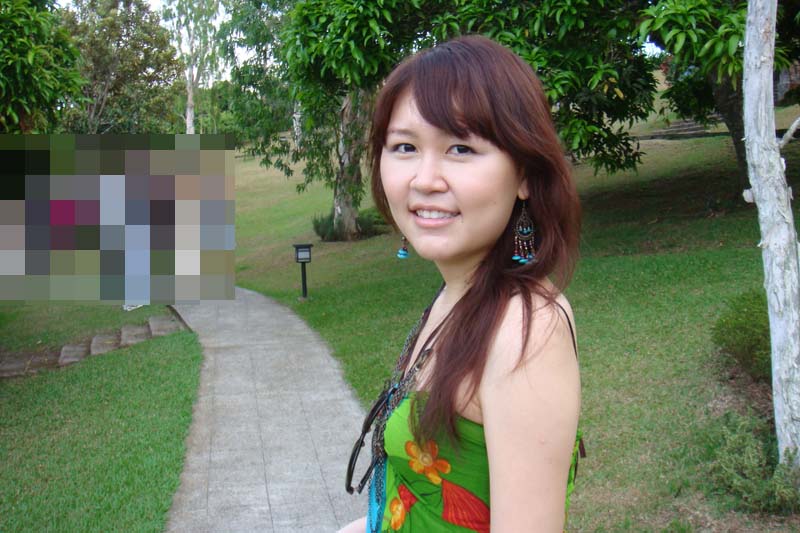
2008: In Tagaytay, Philippines, for my ex-manager’s wedding

2009: At my ex-colleague’s and good friend’s wedding.

2010: Me in one of the many workshops I conducted with JobsCentral (a leading jobs portal in South East Asia)

2010: My live interview on Channel News Asia, BlogTV segment (with hosts Divian and Flying Dutchman, on the right)
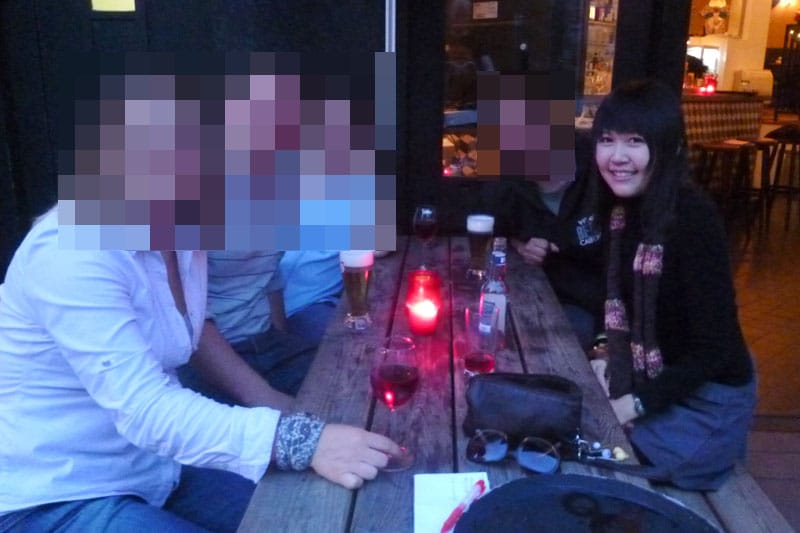
2011: In Holland, with my Dutch friends
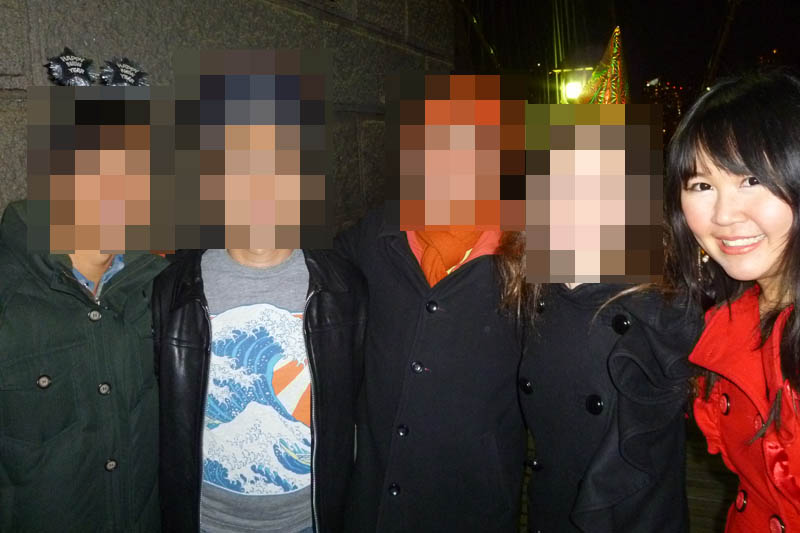
2012: Countdown to New Year’s Day at the Brooklyn Bridge (at New York City)
Insecurity Surrounding Parts of My Face
Well, I never told anyone this, but the reason why I had a fringe for all of these 10 years, up till recently, was because I was afraid to let others see my forehead.
You see, I used to be insecure about my forehead. Fairly Very insecure.
Apparently I have a broad forehead relative to some and broad foreheads are supposedly not a standard of beauty. Back when I was a kid, some of the kids in school would mock me about it. Some even teased me about having a big head.
While we’re on the topic of looks and mockery, one guy from my junior college class once (actually twice I think) mocked me in front of other classmates, saying I had alien ears. The encounters left me feeling inferior and unsure about myself/ my ears; I began to think of my ears as “problem issues” too, even though there was nothing wrong with them.
I didn’t realize it back then, but what I had experienced was bullying, an issue that is starting to get the attention of society and mainstream media. However, back in those days, especially in my country, there was virtually no attention given to the topic of bullying. I never knew I was being bullied; neither did I know that this was ill conduct and that the folks who did that shouldn’t have done it.
I grew up feeling insecure about these parts of my face.
Attempt To Cover Up My Insecurities
Up until that point, I always had short hair, largely because my mom had a mandate that I had to have short hair. (More on this in my femininity series.)
When I went into university, I decided to grow out my hair and get a fringe. By growing out my hair, it would cover my ears, which would make them less obvious. Having a fringe would cover up my forehead and make my face look smaller. By covering up the parts of my face which I was insecure about, I would feel more confident and secure about my appearance.
For the most part, it really did make me feel more confident about myself. I never thought of myself as ugly; I was only insecure about those particular parts of my face since they were the subjects of mockery when I was young. In fact, I often received compliments about my appearance and physical looks from others, namely that I was cute and/or pretty. Getting hit on or picked up by guys is also something I’m not unfamiliar with.
So with this move, I thought, Problem solved.
Uh, yeah right.
The “Problem”
I guess the question here is, “What exactly was the problem?”
For there were never any problems with my forehead, my head, my ears, or any of my facial features or parts of my body—at all. I had thought that my forehead / head / ears were problem areas because I was teased about them when I was younger, but were they really?
The Real Problem
You see, the problem wasn’t my forehead, head, ears, or even hairstyle. Neither was the problem anything related to my face, body, or appearance.
The problem was that I thought they were problem areas.
The reason why those kids had teased me about my forehead or ears was because those features didn’t match up to their perception of beauty or human anatomy. In their minds, they had a perception (albeit a narrow perception) of how high or low foreheads should be, how big or small heads should be, or how ears should look. This narrow perception was likely shaped by media and society. My forehead/ears just didn’t fit with their perception. That was all.
So when the kids saw them, they could only react as how kids with undeveloped EQ and social skills would—by mocking, teasing, insulting, and laughing.
Did this mean that there was a problem with my said features? Nope. It only meant that those kids (a) lacked proper social skills, and (b) had a one-track perception of how human anatomy should be or what beauty should look like.
By thinking that there was something wrong with me or my facial features, I became sucked into a lie which would torment me for the next 10 years. I would often think of ways to correct or “fix” those features, even though there was nothing wrong with them. I would feel insecure, anguished, or even ashamed of them, even though there was nothing to be ashamed about. Whenever I looked into the mirror, I would think about the “gap” between my present look and my ideal look, even though I was perfect the way I was.
Two Things That Made Me Rethink My Perception of Beauty
During my seven-month travel around Europe and U.S. in 2011, I met many different people of different nationalities, ethnicities, and cultures. There were two things that made me rethink my notion of beauty, which, up till then, had remained unchallenged.
The first thing was the magnitude to which the people’s appearances deviated from the standard image of beauty I had been conditioned with, living in Asia.
My image of beauty for females up till that point was this: stick skinny; large dolly eyes; fair, clear and porcelain skin; a sharp face with angular features; and long, flowy hair. You’d find this consistent with the image of beauty many Asians have.
Yet, deviations from this image were aplenty among the many people I saw. The deviations ranged from very pale, tanned, dark, to incredibly dark skin; to freckles; to varying body shapes; to different body frames; to facial features which were fundamentally different from what would be considered beautiful in Asia.

Not my friends, but to give you an idea of the diversity of looks among different races.
These deviations did not make them ugly though. While the different people I saw did not strike me as attractive in the beginning, after a while, I began to see the beauty in their unique features and body shapes. At one point, I even began to see each of them as beautiful in his/her own right.
It would seem that the one-dimensional image of beauty that had previously been firmly embedded in my mind had begun to blur, much to my surprise.
The second thing was my exposure to alternate perceptions of beauty.
I realized that different cultures can have dramatically different views of what’s beautiful and what’s not. At times, these views even contradict each other.
As a simple example: In the west, some people aspire to have tanned skin. There are even tanning salons where people can get tanned artificially. My Brit friends told me that being tanned means that you are healthy, sporty, and have a well-rounded social life. On the other hand, being pale or fair means that you rarely get out in the sun and you have “no life.” It is seen as being “uncool.”
However, in Asia, people, especially females, want to be fair. The whitening market is huge, with whitening products dominating the skincare market. Pretty much all celebrities in Asia have fair skin. Fair skin is associated with beauty, prestige, purity, and royalty, as the royalty in ancient china used to have fair skin. Dark or tanned skin is seen as unattractive for females.
Then, there are the different images of beauty in each country. In Holland, I don’t know what the typical image of beauty is for a female, but I would imagine it’s closer to the genetic look of a Dutch (blonde hair, blue eyes, light skin), than say, an Aryan. In California, I’ve been told that people regard a skinny blonde with big boobs, nice butt, a narrow and sharp nose, and tanned skin as the ideal image of beauty.
The interesting thing is that these alternate perceptions of beauty are no more “right” or “wrong” than another. They are simply different.
Being exposed to such views opened my mind about the notion of beauty. I realized that much of what people perceive as “beauty” today is merely a subjective opinion, shaped by childhood experiences, societal perception and media conditioning—nothing more, nothing less. There are probably a million different perceptions of beauty out there, and there’s really no one “right” or “wrong” perception in that list. They are all just perceptions at the end of the day.
Recognizing Beauty That Has Been There All Along
So after I got back from my travel, I worked on creating my identity separate from work, relationships, etc. (This is unrelated to the revelations I shared above.) Outsourcing, automating, spending more time outside of work, pursuing non-work-related goals, following my intuition, etc. were some of the things I did.
(Check out: Are You Putting Any Parts of Your Life On Hold?)
As I did these, I began to gradually come into my own. I began to see myself more as myself, rather than what I have in my life or the goals and visions which I want to achieve in the future. Subsequently, this shift also happened in the area of physical image.
Past Fixations with Physical “Issues”
Whenever I looked into the mirror in the past, I would spot “imperfections”—things about my body which did not look the way I wanted them to. I would fixate myself on these “issues” and think about how I could “fix” them or cover them up.
However, as I came into my own, I subsequently let go of my attachment to future visions and instead learned to embrace my present self. This isn’t to say that I stopped setting goals or visions; what I mean is that instead of attaching my identity to my visions (which I used to), I began to use them as intentions to inspire me and guide me forward (which should have been the way all along).
This same thing happened in the area of physical image. As I stopped attaching my identity to expectations of what I want to be or what I want to achieve, I also stopped attaching myself to an ideal image of how I want to look. I began to embrace my current body and features for what they are.
A Change in My Reflection
I was surprised by what I began to see in the mirror. As I looked into the mirror every day, I increasingly noticed the beauty of my body—my body, my complexion, my hair type, my forehead, my eyes, my nose, my cheekbones, my ears, my lips, my face shape, my skin, to the rest of my facial features.
Gone were the days where I would groan at the mirror or anguish over a certain facial feature or body part that didn’t look the way I wanted it to look. Gone were the thoughts that would beat myself down.
Every day, my reflection appeared more and more beautiful, even though I did not do anything to change my body and looks outside of my usual routine (exercise, eat well, etc.). It was as if the beauty had been there all along but I had not been able to see it because I had been too blind sided by my mental projections.

I realized that I had been too busy trying to measure my body and my looks against a certain image and trying to spot the “gaps” between them, to the point where I became blinded by the beauty that has been there all along.
It was then that I realized my body and facial features have been all along been perfect the way they are, and it has taken me 28 years of my existence to finally recognize that. And I’m glad I’ve finally broken out of my warped vision and embraced the beauty that is there.
Stop Feeling Inferior About Your Looks
Looking back, there were two things that had prevented me from recognizing my beauty (that has already been there all along):
- My staunch image of beauty which also happened to be one-dimensional, i.e. big eyes, complexion of X color, certain facial features, certain hair length, etc. This image was ingrained in me since young, by way of media conditioning, societal conditioning, and personal experiences.
- Constantly measuring my looks against that image when it is no more than just a perception; a projection by the media/society; an impression that others have.
Being exposed to alternate perceptions of beauty while I was traveling helped me release my mental notion of beauty. Subsequently, embracing my individuality and my present self for who I am today made me recognize the beauty that has been there all along.
If you have felt inferior about your looks before; if there are parts of your face or body which you are ashamed of; if you have thought negatively about your physical appearance, body, or face before, there are three things I would like to say to you today.
1. You are already beautiful the way you are
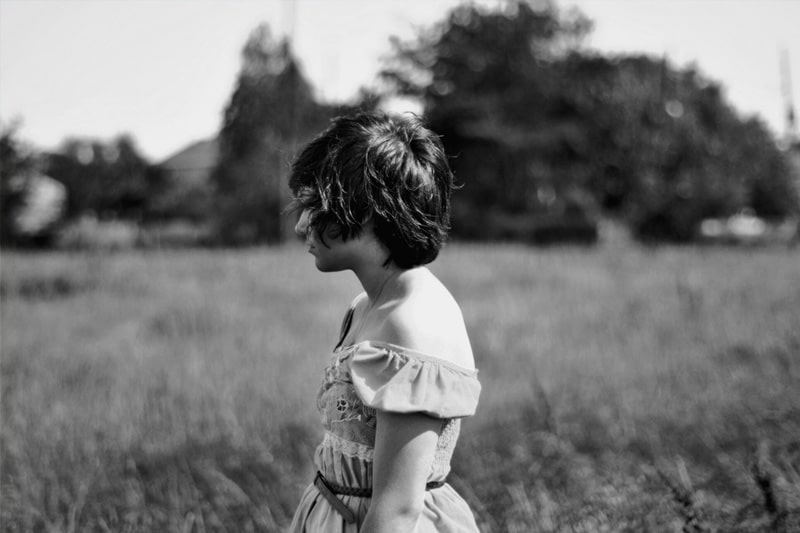
Maybe in your mind, you have a certain image of beauty. Maybe beauty to you is having a high nose bridge, a sharp chin, a small waist, and nice curves. Maybe beauty to you is having a small nose, pouty lips, large eyes, double eyelids, a V-shape face, and fair skin. Maybe beauty to you is having dark, chocolate-colored skin; dark-colored eyes; long eyelashes; and long, straight, iron-clamped hair.
This image of beauty was conditioned in you since you were young. And there is no more truth behind this image compared any other belief you have, say, “chocolates are tasty,” “flowers are yellow,” or “the grass is green.”
I’m not saying that the image you have is false. What I’m trying to say here is that the image you have is narrow.
Yes, that image you have in your mind of beauty is beauty. But so are zillions of other images in the world. And guess what? None of them is more beautiful or less beautiful than another. They are all beautiful in their own individual right, on their own scale that is comparable to none.
(Read: Why You Should Stop Comparing Yourself With Others (And 3 Steps To Do So))
The fact is that everything around us is beauty. You are beauty. I am beauty. The world is beauty. Everything, everyone, around us is beauty, given form and life by whoever or whatever created it.
The reason why you can’t recognize this is because you’re too busy trying to hold on to your one-track definition of beauty. Wherever you go, you narrowly zoom down to the things that match that image, because that is the definition of beauty you have in your mind. Unfortunately, this has prevented you from seeing the beauty, the glorious beauty, that lies everywhere else. That has prevented you from seeing the beauty that is in YOU.
I used to be just like you. Rigidly holding on to a one-dimensional definition of beauty and measuring myself against that. Traveling and being exposed to different perceptions of beauty and people of different colors, ethnicities, and descents has made me realize that beauty lies everywhere. There is beauty in everything.
The image I had held on to before was nothing more than a narrow sliver of what beauty really is. By releasing this narrow mental notion, I finally recognize the beauty that exists everywhere, in everyone and everything, today.
2. Your beauty does not come from conforming to a certain image
Many people have a notion of beauty built in their minds since young. They make it a personal quest to attain that image of beauty for a good part of their lives.
In the times they achieve that image, be it via losing weight, wearing certain makeup, wearing certain clothes, getting their teeth fixed, or even plastic surgery for some, they become very proud of themselves. They regard themselves as beautiful and beam in confidence about their looks.
In the times they don’t achieve that image, they become self-conscious. They are afraid to face other people, go out, or even take pictures or videos.
I believe most of us have acted that way at some point. I used to be like that in the past.
My revelations in the area of beauty have made me realize that beauty isn’t about conforming to an image. Given that beauty is already in all of us (see Point #1), true beauty is about being comfortable in your skin, embracing who you are, and radiating through the physical body you have been blessed with by the world/creator/God/etc (depending on your beliefs).
The most striking example I can give is how I can meet people who are extremely well-dressed and done up, but still feel that they are unattractive. Why? Because they are extremely insecure about themselves, and it shows. They are nothing more than slaves to their looks, always hung up about presenting a certain physical image or look and terrified of looking “lesser” than that.
On the other hand, there are people who do not have conventional good looks who appear very attractive. They are comfortable in their own skin, they know themselves, they are happy with life, and they radiate in their own light. They take care in improving their physical appearances and in dressing well, but these are not what make them attractive—their confidence, warmth, and souls are.
If there’s a part of you that thinks of yourself as unattractive, ugly, or unbeautiful, that’s the part of you that’s making you unattractive, ugly, or unbeautiful, because there’s nothing more unattractive than an unconfident person. Yes, work on improving your physique, your looks, your personal grooming, and your etiquette, but don’t forget about your confidence. A confident person will always appear many times more attractive than someone who is conventionally attractive but unconfident.
Read: How To Be The Most Confident Person In The World
3. Work on being yourself
I always believe that our insecurities about certain areas of our lives stem from insecurities about our own identities as humans. The goes the same to insecurities about physical appearances.
As you work on embracing your beauty (Point #1) and on your confidence (Point #2), work on coming into your own. This means discovering who you are, what you want to be, and your place in this world—independent of your career, your relationships, or any area of the life wheel.
Who are you? What makes you, you? What is your reason for being? What inspires you? And what do you live for?
These were the very questions I thought about and answered in the past few months. I had already discovered my values and my purpose statement way back (Live a Better Life in 30 Days covers this on Days 15 and 16), so this was a revisit to age-old questions.
I realized the past me had defined myself based on my career and accomplishments, and while I was doing well in them, it was time to create my identity as me, independent of other things in life. I re-clarified on my purpose statement, stuck with the same values (Excellence, Love, Truth), set new traits for my ideal self (self-assured, joyous, present, full of love, and understanding), and re-clarified my priorities in my life.
In doing so, I became clear of my center in the world and where different things stand in my life. I also became clear about who I am and what I stand for. Doing so made me see me as truly me, and not an object or person to be molded to fit others’ or societal expectations.
Subsequently, I began to recognize my physical body and features as what they are, rather than something I should force fit to match certain societal definitions of beauty. This helped me recognize the beauty that has already been there all along, which I have since embraced.
My article Finding Your Inner Self will be a great place to start.
Final Words
I hope you have found this piece useful. It took me 28 years to come to the realizations I’ve shared above and I’ve shared them here, hoping that they will help you realize that you are already truly beautiful as yourself.
For me, I’m indifferent about covering up my forehead today, so I have since grown out my fringe. :) Here is a picture of me with my husband on our wedding day, May 25, 2014. :)
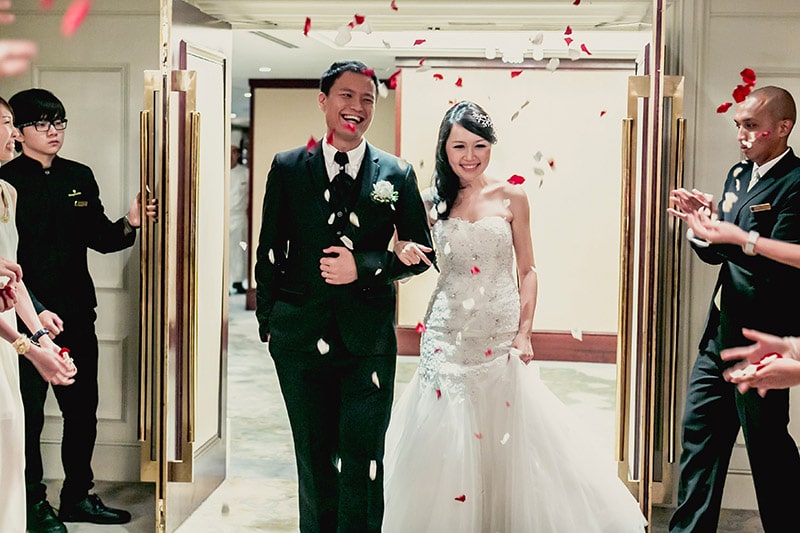
More photos of me without my fringe can be found in my engagement photoshoot and my wedding series.
Where physical appearance is concerned, I continue to improve my appearance, such as working out, eating well, dressing well, and using preservative-free skincare products, but I no longer do them because I feel ugly or to correct “imperfections” or to “match up” to a certain mental image of beauty.
Rather, I do them because I honor myself, I like how I look at the present, and I want to look even better. It’s part of improving upon what I have/like vs. trying to get rid of what I dislike, with the latter being a bigger motivator in the past.
Update: I think some readers took away the message of this article as “inner beauty is more important than outer beauty.”
While that is in fact part of what I’m driving (see Point #2), the bigger point I’m trying to say is that whatever looks you have now is ALREADY BEAUTIFUL, and it is NOT LESS OR MORE beautiful than another’s looks (see Point #1). YOU ARE ALREADY BEAUTIFUL AS YOURSELF NOW, FULL STOP. You, looking just the way you are now, are BEAUTIFUL as ANY magazine model or celebrity icon. Beauty comes in all forms, shapes, sizes, colors, and ages, not just the one-track definition that the media keeps projecting in our faces. Do read Point #1 again for what I have to say on this.
If you know anyone who has a poor self-image or who does not think of him/herself as beautiful or good looking, please refer him/her to this article. Bookmark the article for yourself too and refer to it should you ever feel less than 10/10 beautiful/handsome. Because you are already 10/10 beautiful/handsome as yourself, the way you are. ❤️
Be sure to check out:
- How To Love Your Body (series)
- How I Found My Place as a Female in Today’s World (series)
- Affirmation Challenge Day 14 [Self-Image]: “I’m perfect as myself.”
- Is there an ideal beauty? This lady gets her face photoshopped in over 25 countries to find out
- Why I Used To Hate My Feet – The Stigma Against Women with Big Feet
(Images: People, Mirror, Girl, Photos © Personal Excellence)

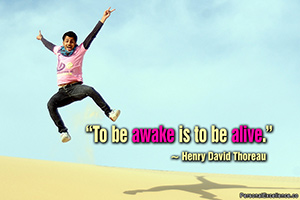
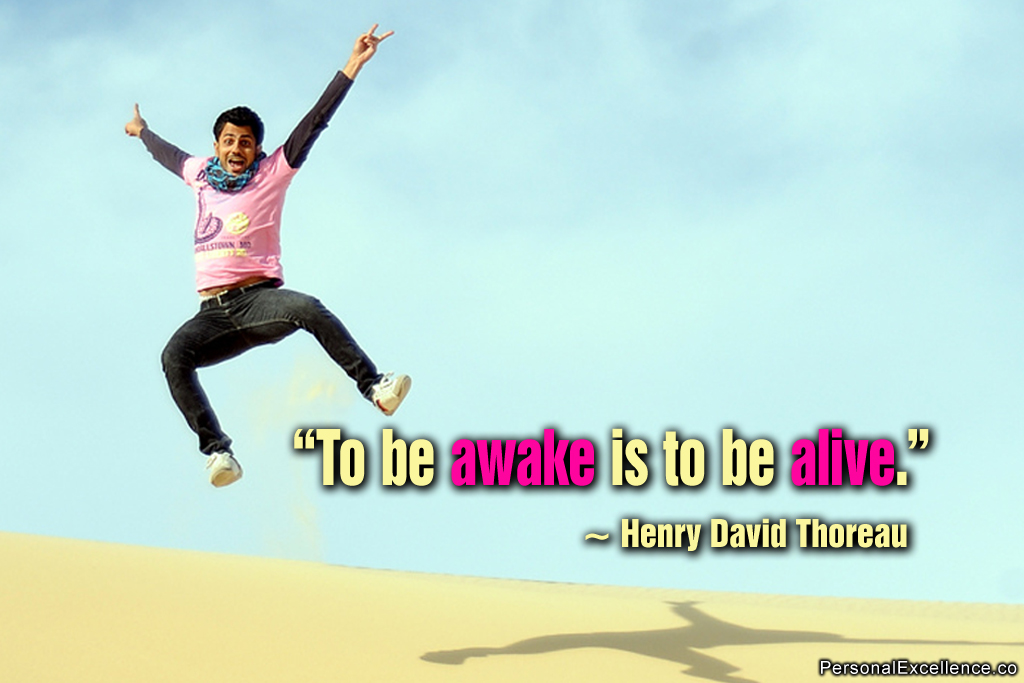



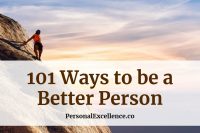
 Thanks for reading. If you like my free articles, join my private email list and get my latest updates and articles sent right to your inbox.
Thanks for reading. If you like my free articles, join my private email list and get my latest updates and articles sent right to your inbox.